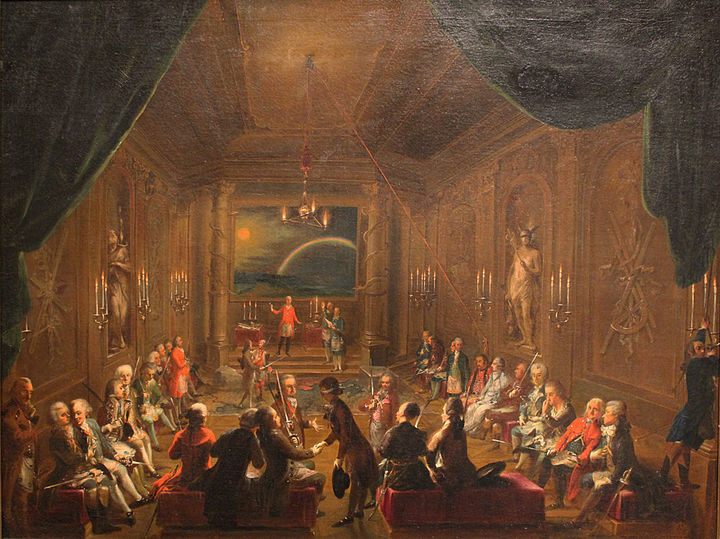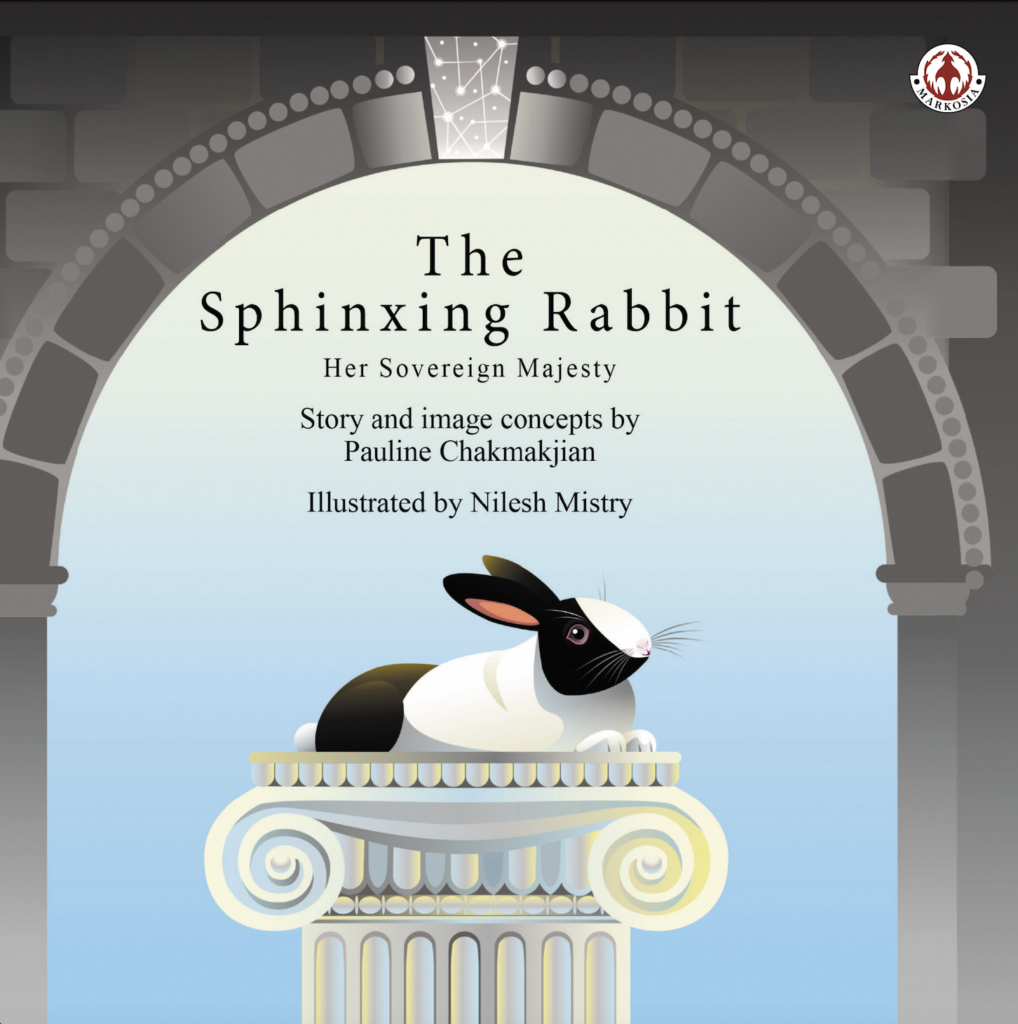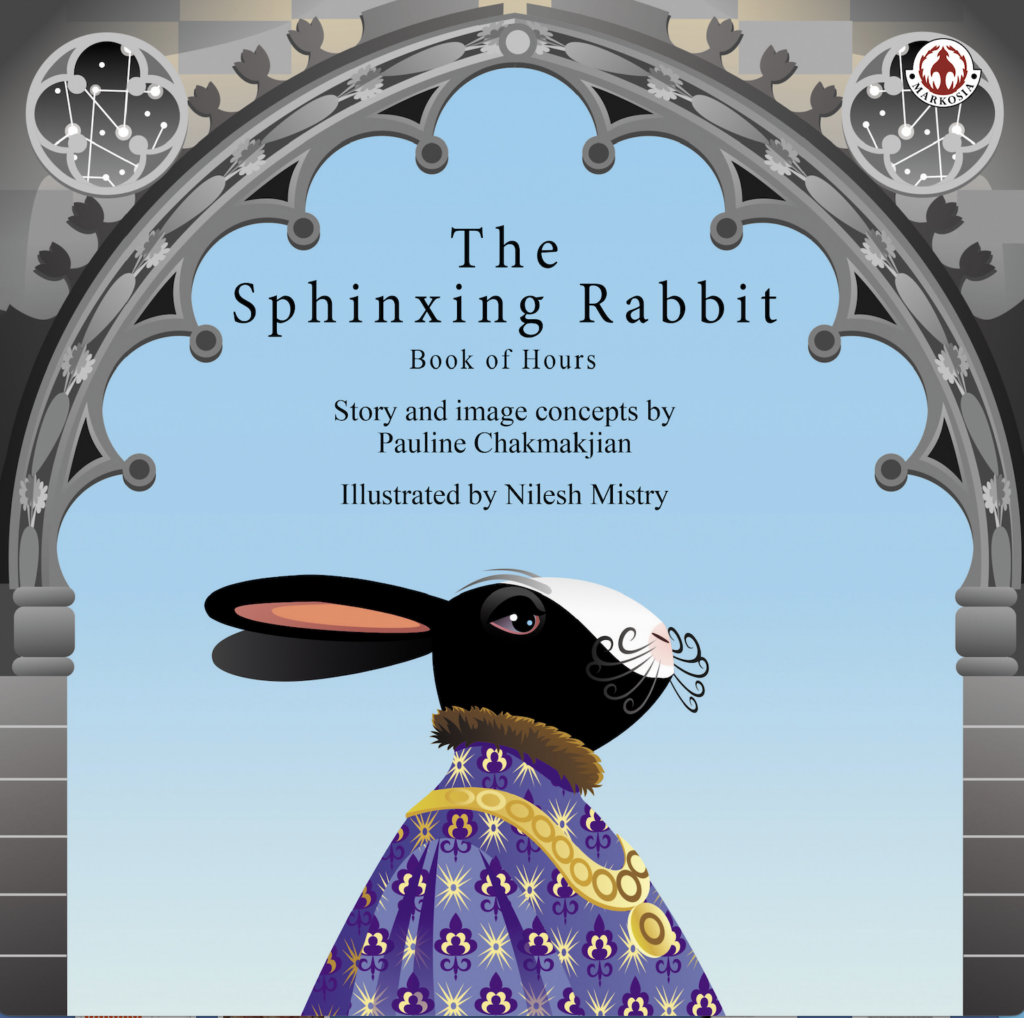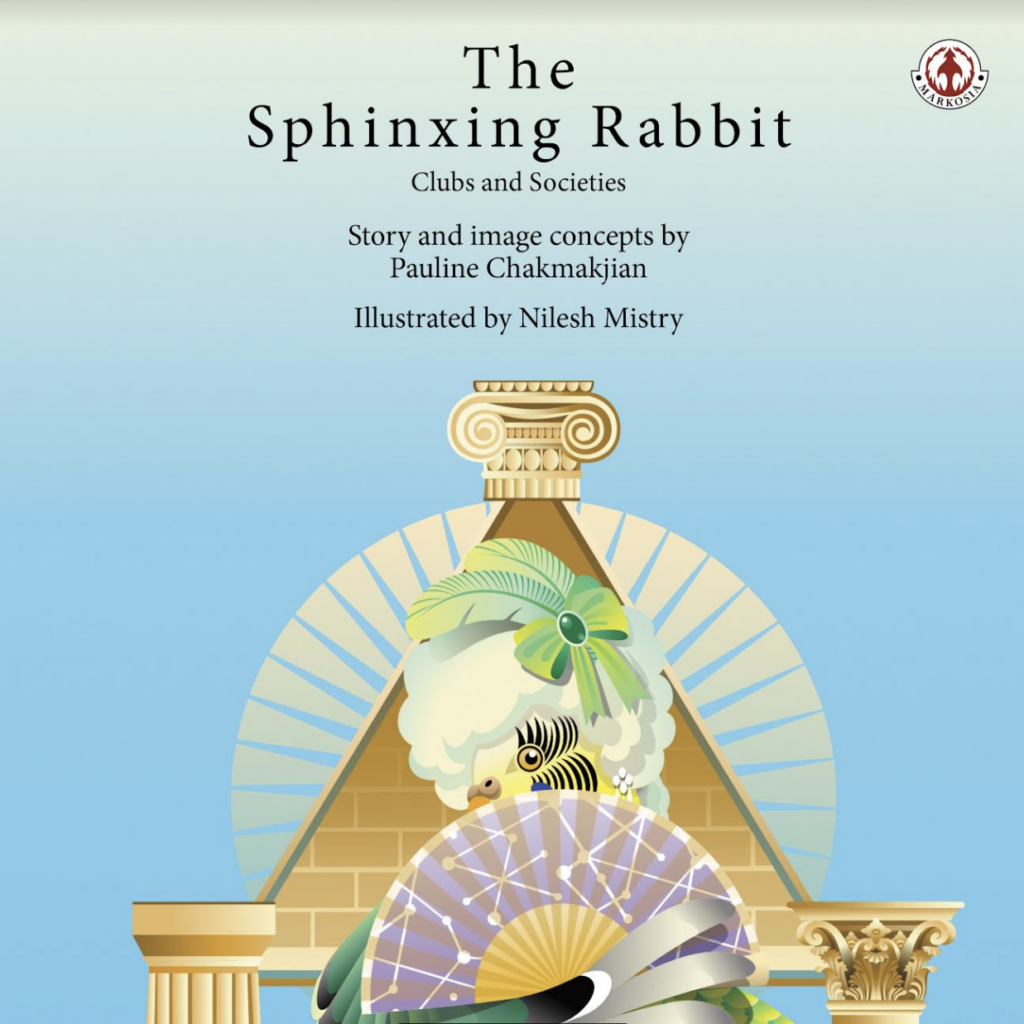
Freemasonry Lodge in Vienna, 1789 (courtesy of Wienmuseum)
By Pauline Chakmakjian –
My publisher Markosia in the UK recently released my trilogy: The Sphinxing Rabbit: Her Sovereign Majesty, The Sphinxing Rabbit: Book of Hours and The Sphinxing Rabbit: Clubs and Societies. All three books in the series from a publisher noted for graphic novels make references to freemasonry in addition to art history and ideologies. As a public speaker as well, I am still barred from speaking about freemasonry at certain venues despite me not being a Masonic member and only offering to lecture on the subject, among many other topics, so that it is better understood, since its core beliefs promote love of fellow humans, charity and finding human relief. It’s easy to forget that in the 18th century, Mozart became a member of a Masonic lodge in Vienna, among other famous people. The above image is said be of the Viennese lodge to which Mozart belonged. Others like Benjamin Franklin, Beethoven, George Washington, Lord Nelson and more recently Winston Churchill to name only a few respected individuals were also members of masonic lodges.
In the present day when there is an epidemic of loneliness due to, among many other factors, various psychological effects of social media despite humans living in a time of the highest connectivity to one another, would it not be prudent to look back at intellectual history to try to concentrate on more genuine forms of sociability? Belonging to a social group is well known to offer some mental and emotional benefits. Why couldn’t this be said about belonging to a masonic society as well? Social organizations also can be seen as easy evidence of humans needing to bond. As my books suggest, rabbits rarely live by themselves either.

In medieval Europe, there were different kinds of guilds specific to every trade or artisan craft such as pewterers, butchers, glovers and saddlers. Among these many guilds was the guild of stonemasons, who were artisans responsible for the construction of complex structures like castles and cathedrals. In masonic scholarship, the guild of masons trained in the actual craft of stonemasonry is referred to as operative freemasonry.
Within the guild system, the skills of any one craft were transmitted through a hierarchical apprenticeship system and oral tradition. Therefore, becoming a stonemason involved both an initiation process and swearing to secrecy of the trade skills learned. Towards the end of the seventeenth century, the guild system started to die out; and England experienced the rise of coffeehouse culture. P. Clark noted this in British Clubs and Societies (Oxford, 2000):
“The great surge of public sociability at inns and alehouses began in the late seventeenth century when innkeepers and publicans became leaders in sponsoring new kinds of fashionable entertainment, from concerts to cricket and clubs. The first coffee-house opened in Oxford in the 1650s and others quickly followed; they were places to discuss politics, plays, or foreign news.”
The oldest coffee house in Paris, Le Procope founded in 1686, promoted more than coffee and Voltaire was a frequent socializer there. What we find here is something entirely different from feudalism. Feudalism was a very efficient hierarchal system in which everyone knew their place. With this shift to coffee-house culture, what we see is that instead of history simply occurring while people lived out their lives unconscious of their world, more people are starting to be more aware of their surroundings, aware of their society, and start to discuss their opinions about a variety of subjects. For the first time there was a notion of genuine happiness through people choosing what they wanted to talk about and being free to express their opinions openly in contrast to rigid feudalism. This is also considered by many scholars to be a period known in intellectual history as pre-Enlightenment.
There is no one definition of the Enlightenment, but broadly speaking it was a combination of scientific advancement, increased sociability, and a greater consciousness of living and participation in society through meeting places. It is questionable if Britain experienced an Enlightenment, but Clark states, “If a British enlightenment did exist, then one of its principal engines was the Georgian voluntary society.”
George I started his reign in 1714, and he set a trend for frequent socializing between 1717 and 1720. It is important to note three phenomena at this point: first, relaxed social interaction amongst the nobility, gentry, and commoners; second, inns and taverns being used as meeting places; and finally, that geometry and architecture were considered particularly fashionable topics of study among the educated middle- and upper-class male gentry and aristocracy. When we consider all these elements together at this time in English society, it is not altogether that surprising that something like speculative freemasonry emerged in 1717 London. In masonic scholarship, speculative freemasonry is the term used to refer to those men who borrowed certain traditions from the operative stonemasons to form a fraternity, a type of voluntary association.
One of the rules of membership was – and still is – that no discussion of religion or politics is allowed in their meetings as these are the two things that divide people the most. These and other regulations are found in the constitutions of each Grand Lodge, the headquarters of freemasonry in each country where it exists. Although the focus of freemasonry today has moved more towards greater charitable works and social gatherings, the freemasonry of eighteenth-century England was more akin to a cultural salon with respect to the majority of its activities. In the assessment of M. Jacob in Living the Enlightenment (Oxford, 1991):
“The underlying themes of Masonic literature were improvement and enlightenment, with a stress on merit as the measure of men, education, and the joys of fraternal association; in sum, a utopian world detached from political, religious, or ascribed social status. These themes appear elsewhere in the associational literature of the eighteenth century, but Freemasons articulated them more consistently and loudly . . . There is considerable evidence, at least for the early eighteenth century, that Masons were actively involved in ‘mental improvement’ . . . A Masonic tract in 1729 spoke of ‘most lodges in London and several other parts of this kingdom [having] a lecture on some point of geometry and architecture.”
Such activities were not confined to obvious Masonic themes. During the 1730s, the Old King’s Arms lodge in London heard lectures ranging over military architecture, the circulation of blood, optics, the structure of muscles, and the chemical process of fermentation.
While there are still pubs and clubs about, people seem lost in society today, perhaps because there is an overstimulation from electronics. Freemasonry was and still is one of those hidden gems in history that can combine sociability with intellectual curiosity in convivial settings. Many observers feel the younger generations are losing the ability to converse as well as several other graceful social skills. We cannot all be courtiers, but it might be an idea to move away from exaggerated claims of mental health issues and move towards the refinement of sprezzatura, which can be defined as a courtier’s ability of manifesting a facility in accomplishing complex or difficult actions cloaking the conscious effort that went into doing them.


In my books, while Freemasonry is never dominant, the conviviality of my characters (for example in The Sphinxing Rabbit Clubs and Societies as well as The Sphinxing Rabbit Book of Hours) enhances their sociability and civility, which latter appears to becoming a lost art. We can instead concentrate on what brings us together instead of what might drive us apart. Commonality should not be uncommon and I hope even my stories of social animals like rabbits will help to generate endearing such bonds, just as our favorite books have always done.
https://markosia.com/the-sphinxing-rabbit-her-sovereign-majesty/